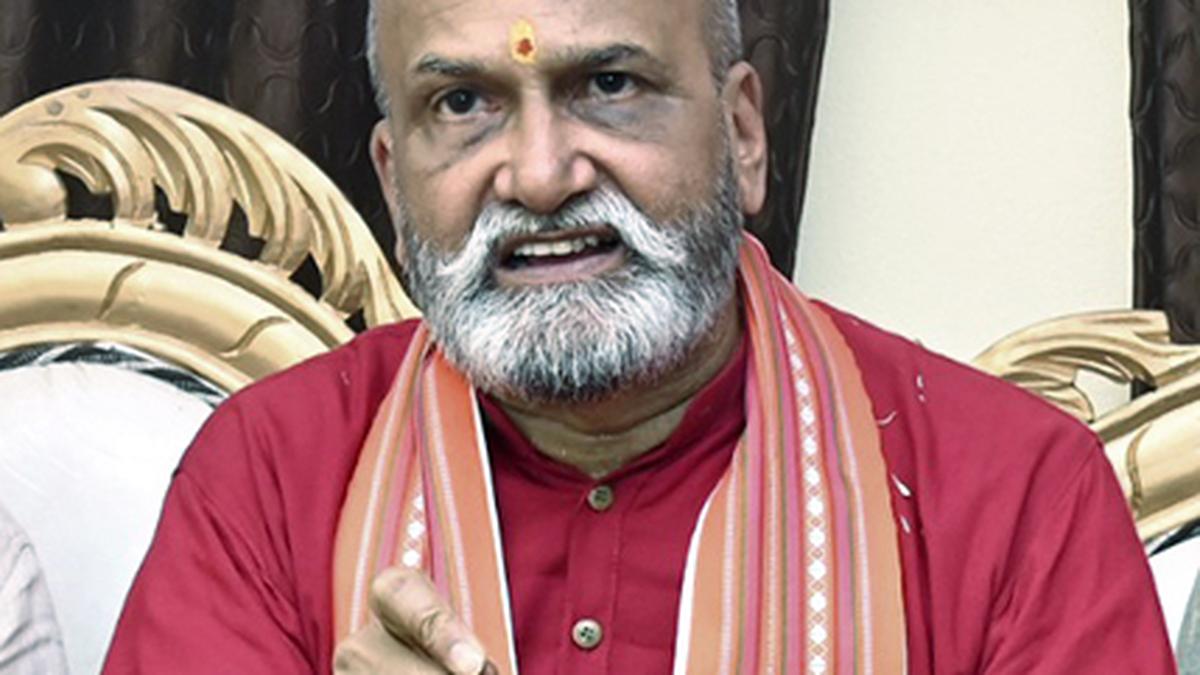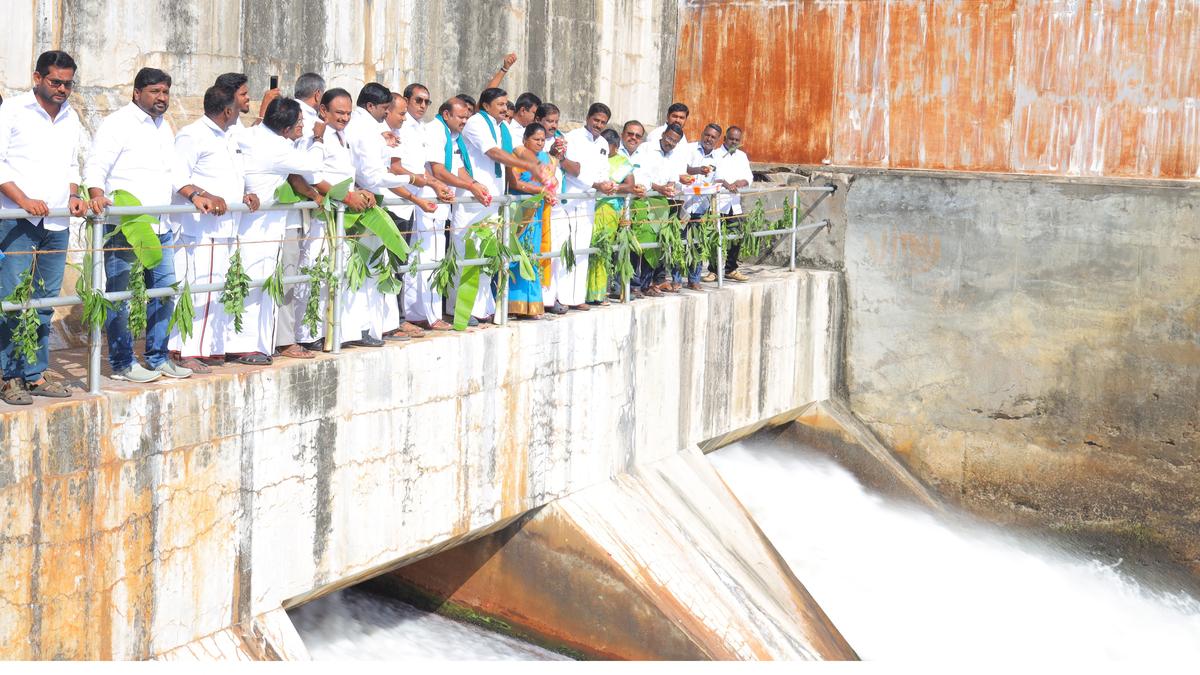A cherished time of the day in many parts of India is the convivial gathering around a cup of tea. In tea stalls, the chatter ranges from the raucous to the intimate and from the political to the personal, so when one beholds artist Prasanta Sahu’s installation Tea Table Talk, it makes one pause.
Three-thousand commissioned terracotta cups, shattered, have been piled atop a table — familiar shards because a mud cup is what one discards when one is done with tea. Sahu, an ardent tea stall visitor, inscribes each terracotta piece with handwritten snippets of overheard conversations: “…but do not know he will…”, “play a cricket match in the school field…”, “… I love to gossip…”. Miraculously, these confessions bring a single table alive with a thousand discarded conversations and sets the pace for Sahu’s latest solo exhibition The Geometry of Ordinary Lives, which presents an artist’s exploration presented through sculptural installations, paintings, video and sketches.
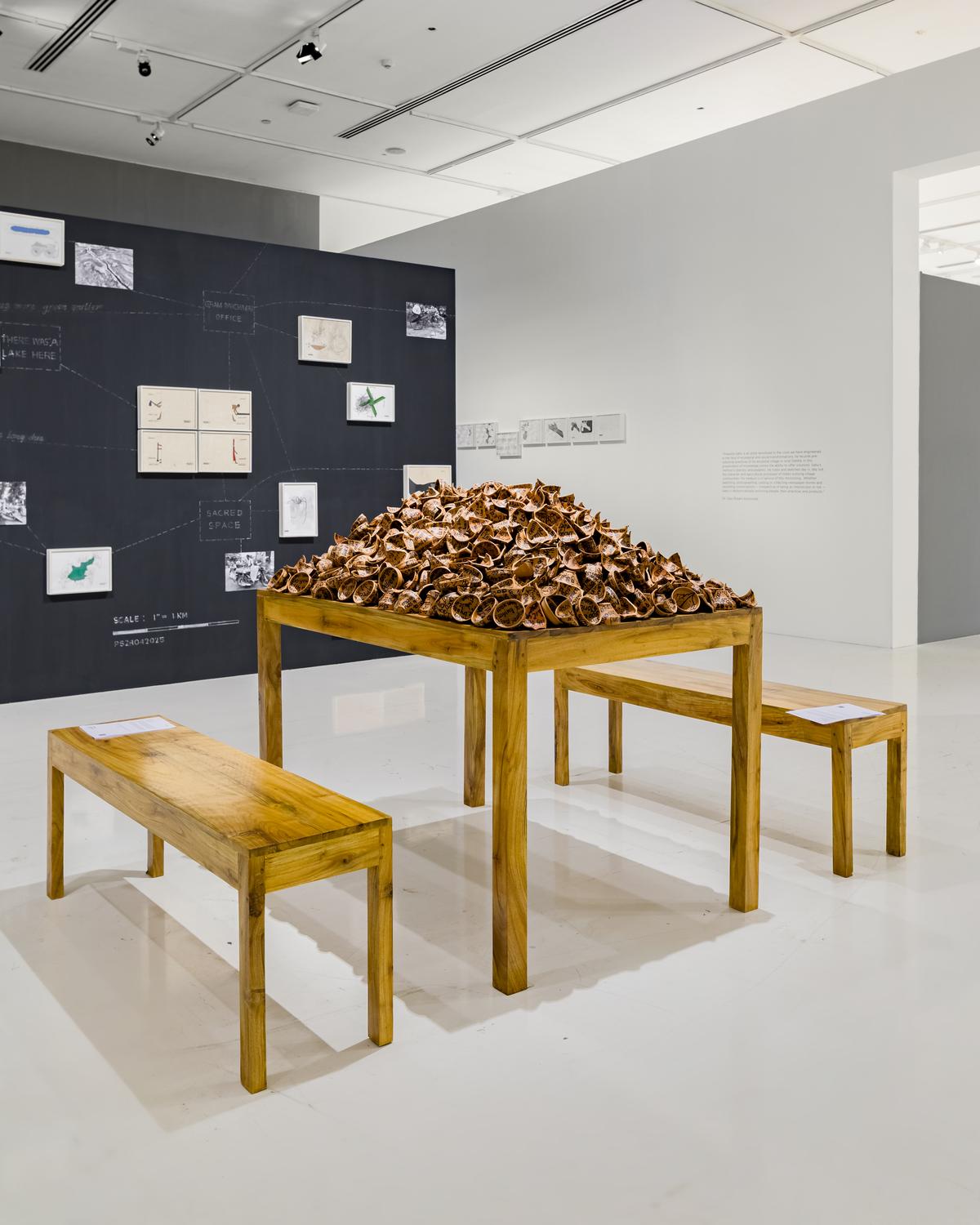
Prasanta Sahu’s Tea Table Talk installation
| Photo Credit:
Vivian Sarky
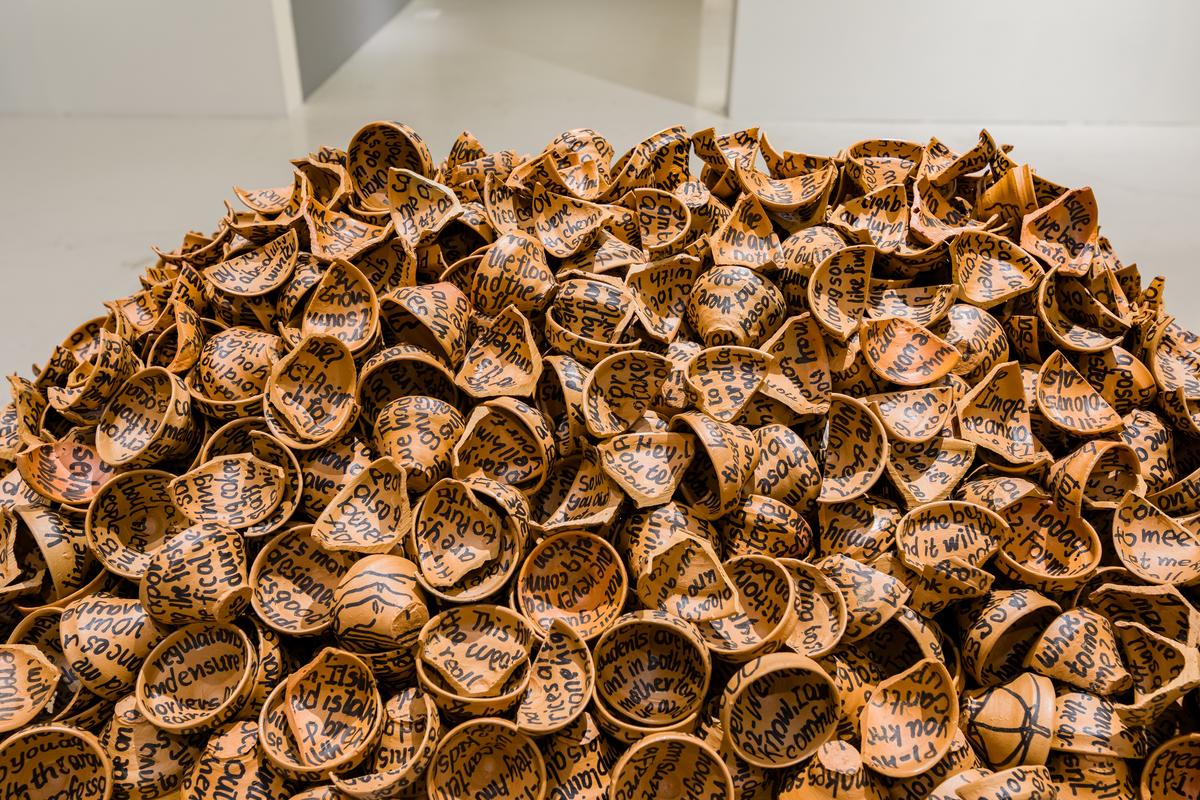
A thousand discarded conversations
| Photo Credit:
Vivian Sarky

Cartographic approach
Sahu’s penchant for art intersects firmly between research, inquiry and the human lived experience. And this new exhibition is hard-hitting and powerful not only because it sees an artist at his peak form with nearly four decades of practice, but also because it’s a wonderful interaction with generational knowledge and its transmission. In our world that constanty seeks technological bridges, his art is a throwback to the beauty of what the human body and memory alone can create and transmit.
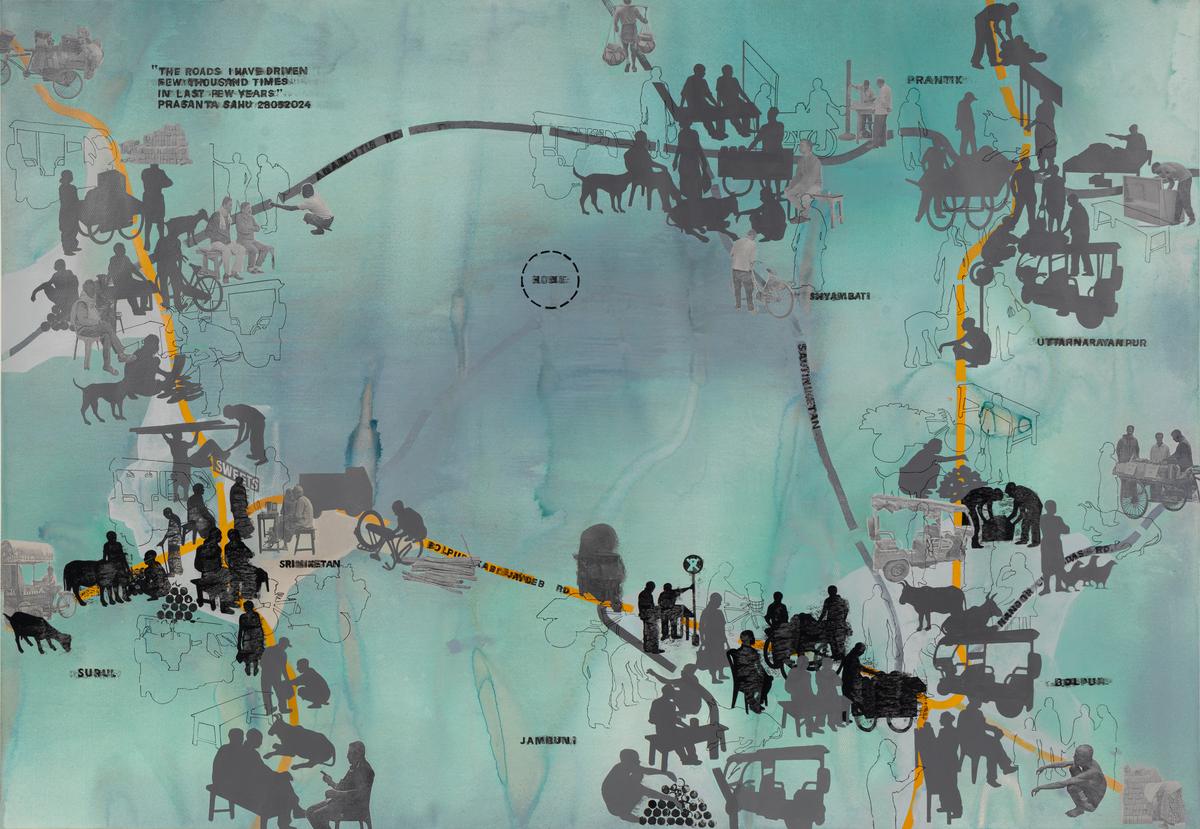
Mapping My Neighbourhood (acrylic and photo transfer on acid-free paper)
With a firm artistic expression shaped by his early career experience as a technical draftsman and a surveyor, his methodical, cartographic approach is deeply embedded in his work. It is also informed by his decade-long interactions with communities in his native, rural Odisha, and current place of residence, Santiniketan — from blacksmiths, carpenters, potters, and craftsmen to farmers and other “ordinary” people who he sees as dynamic repositories of knowledge. For example, in a quartet of line drawing sketches in the exhibition that traces tradesman work motions, the artist overlays his observations with a painting of a primary tool. Even as a trowel or screwdriver holds your attention, the tactile intimacy of a worker and his surroundings, and the taught skills in a tradesman’s hands, are brought into sharp focus through Sahu’s astute observations in drawings beneath.
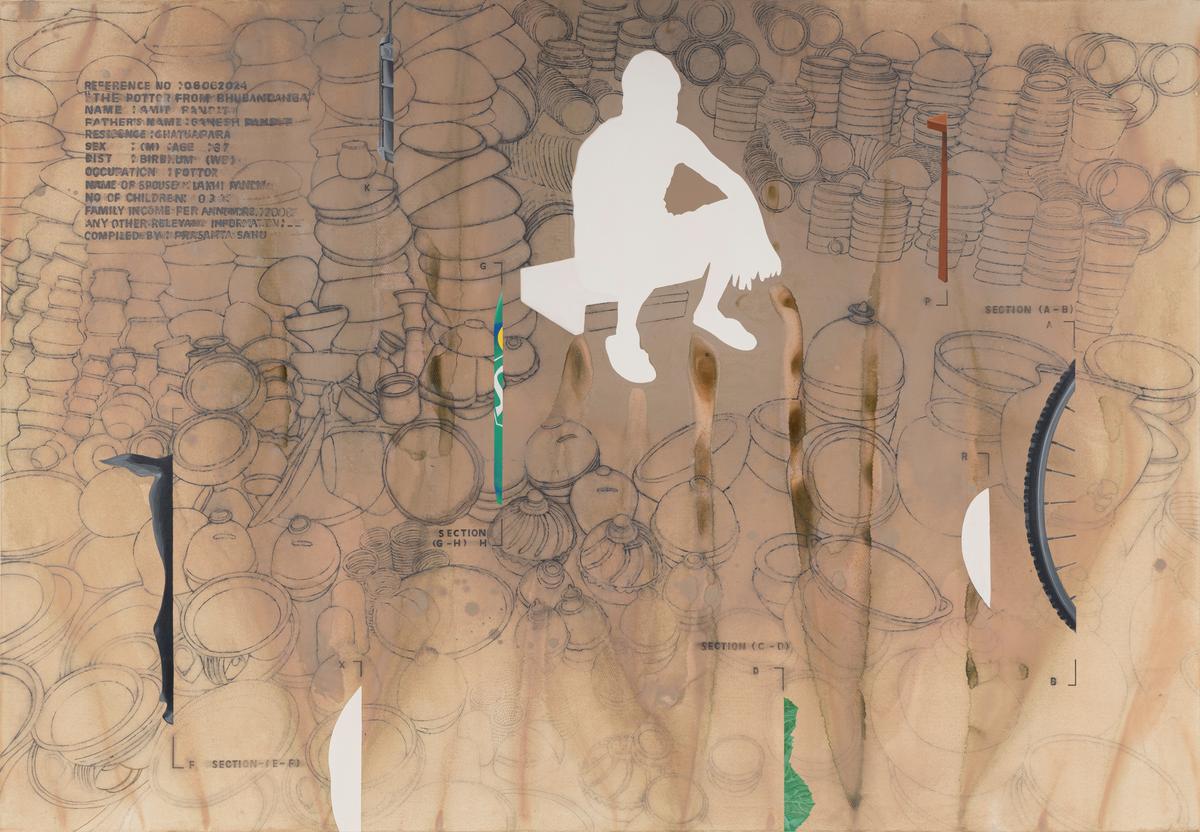
Vessels of Memory (acrylic on acid-free paper)
Reframing artisanal labour
This exhibition presents a lens that is deeply familiar and yet is a refreshingly new spatial take on life studies and traditions. As the curatorial note puts it simply: in “understanding the fluidity of knowledge as it is practised, adapted, and transferred”.
It is evident that Sahu constantly sketches, listens, photographs and videographs, and is always mapping an idea, a thought, a terrain or a landscape. One can’t help but wonder what his archive looks like. A repository of the rural and suburban peoples and geographies of our times and perhaps also of a thinking artist of our times?
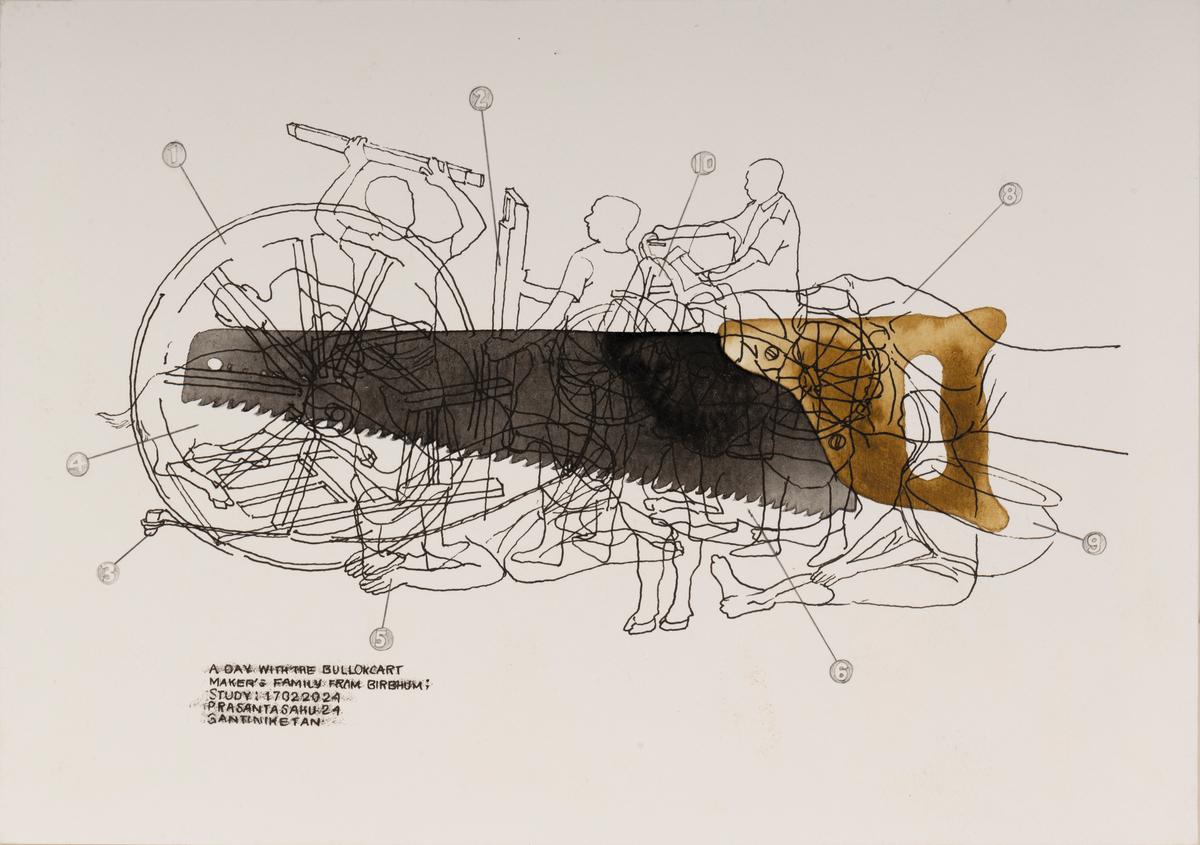
Tools That Hold Memories (ink, graphite and watercolour on acid-free paper)
For those interested, Sahu presents here an engaging interplay between archival inquiry and ways of seeing ‘ordinary lives’. It’s an artist’s silent tribute too, to a world of people who work with their hands, with skills taught from one pair of hands to the other, between generations, and a world that is threatened by the future of mechanisation and artificial intelligence.
Prasanta Sahu: The Geometry of Ordinary Lives is on till June 21 at Emami Art in Kolkata.
The writer is the founder-director of Eka Archiving Services.
Published – June 05, 2025 03:54 pm IST
